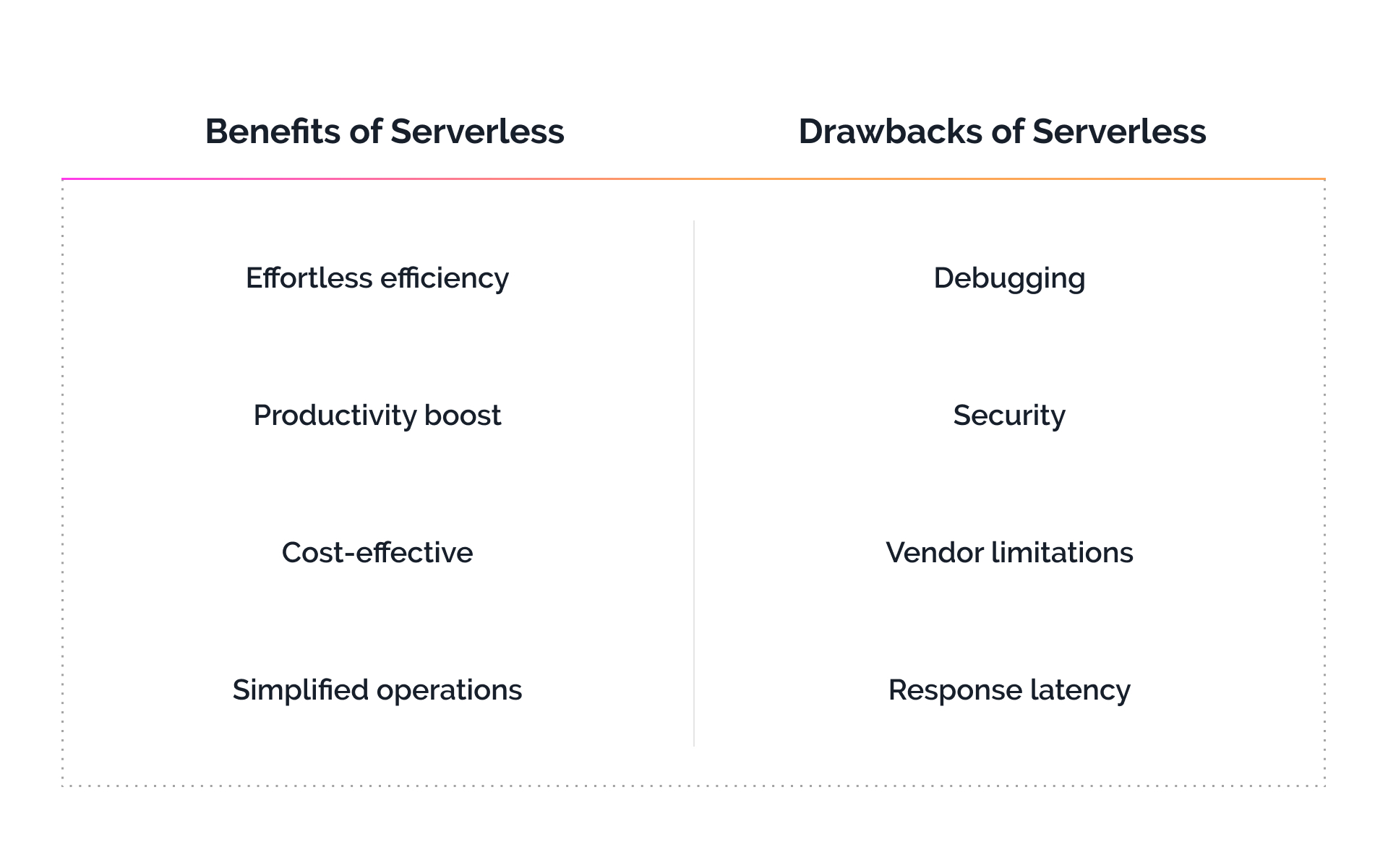What is Serverless? It is a kind of software architecture model that allows you to run and manage any application without having to manage servers. All code events are controlled through services that the project team has access to in the cloud. What is worth knowing about Serverless and its use?
Definition – serverless meaning
In Serverless web application development, developers do not deal with the maintenance of servers in order to create and run applications. Managing the servers in this situation is the responsibility of the cloud service provider. It is he who is tasked with scaling the entire server infrastructure, its maintenance, and other basic tasks on which the reliability of his services depends.
This is a huge convenience for developers who only have to package their code in containers, and they are launched automatically when the user wishes.
Serverless computing vs. cloud computing
Therefore, we are dealing here with FaaS, i.e., Function-as-a-Service standard. The user pays for the resources that he actually uses. It is thus the opposite of the Infrastructure-as-a-Service standard, where the user pays for the purchased resources, regardless of whether he uses all of them.
FaaS flexibility
The flexibility of Serverless allows you to automatically cut back on unused resources. Such a service also allows you to build a completely Serverless or hybrid application with mixed resources.[1]
Step-by-step operation of the Serverless model
In the first place, the developer deals with the development of the application. It has a number of functions. Each function must clearly specify what changes it makes and how it is called by the user.
Then the application is deployed. Once it is available to the user, it is enough to perform a specific action to trigger a specific event.
At this point, said event is routed to the cloud service provider. In order for an action in the application to be performed, the required resources are allocated to it. After assigning them, it is possible to complete the task and return the user the answer he expects. Resources are only allocated when there are user requests for execution.[2]
Read also: Surviving Scope Creep: Strategies to Keep Your Project on Track?
Serverless architecture principles and best practices
To design Serverless applications well, you must completely change your approach to building them. What are the main Serverless architecture principles?
The way of developing the code
The basic principle is to develop code that will act like functions. Each function must have a specific trigger that will lead to a specific action. It is worth noting that many cloud service providers provide ready-made solutions to developers who want to use the FaaS model as soon as possible. Event-driven architecture (EDA) is very well suited for developing functions activated by a specific trigger.[3]
Serverless frameworks
Serverless frameworks are a great help in managing thousands of functions in the application. They take the form of tools that make it easy to deploy and manage large resources of Serverless functions. An example of such a framework is AWS, Zappa, Apex Up, Terraform etc. Some of them work exclusively with their own resources, while others are compatible with the most popular clouds. Frameworks are used to compile code and deploy it to the cloud. Thanks to frameworks, the entire configuration process is faster and more efficient.[4]
Serverless containers
Code is packaged into Serverless containers, which can then be managed more easily. They are very useful when creating complex Serverless functions and when multiple languages are used in application development. However, you must use them wisely because their form makes debugging difficult.[5]
Serverless orchestration
Serverless orchestration is the use of containers with implemented code and treating such a container as a reusable block. It is also a whole process aimed at organizing the performance of specific functions in a harmonious, error-free, fast, and automated way.[6]
Serverless pros and cons
What are the benefits of Serverless, and when is it problematic to use such a solution?
Advantages of Serverless
Serverless is a way to increase productivity and reduce operating costs. Developers don’t have to manage the servers because the cloud service provider does it for them. Besides, Serverless makes it easy to implement DevOps.
Disadvantages of Serverless
Individual components of the cloud infrastructure may have a specific, restrictive, targeted way of operation. Therefore, it is necessary to adapt one’s own systems to their solutions. Besides, the impact on the server is limited, and you are dependent on cloud service providers for more advanced modifications.[7]
The graphic below shows the most important benefits and drawbacks of Serverless:

Final conclusions
Serverless is a great solution for developing and operating web apps and real-time data streaming. To a large extent, the choice of this solution will depend on whether the company needs high scalability, fast implementation, an event-driven model, and focusing on issues other than server management. The decision will therefore depend on the specifics of the project you are working on.
Read also: Enhancing Software Testing Efficiency with “One Page” Test Plans




